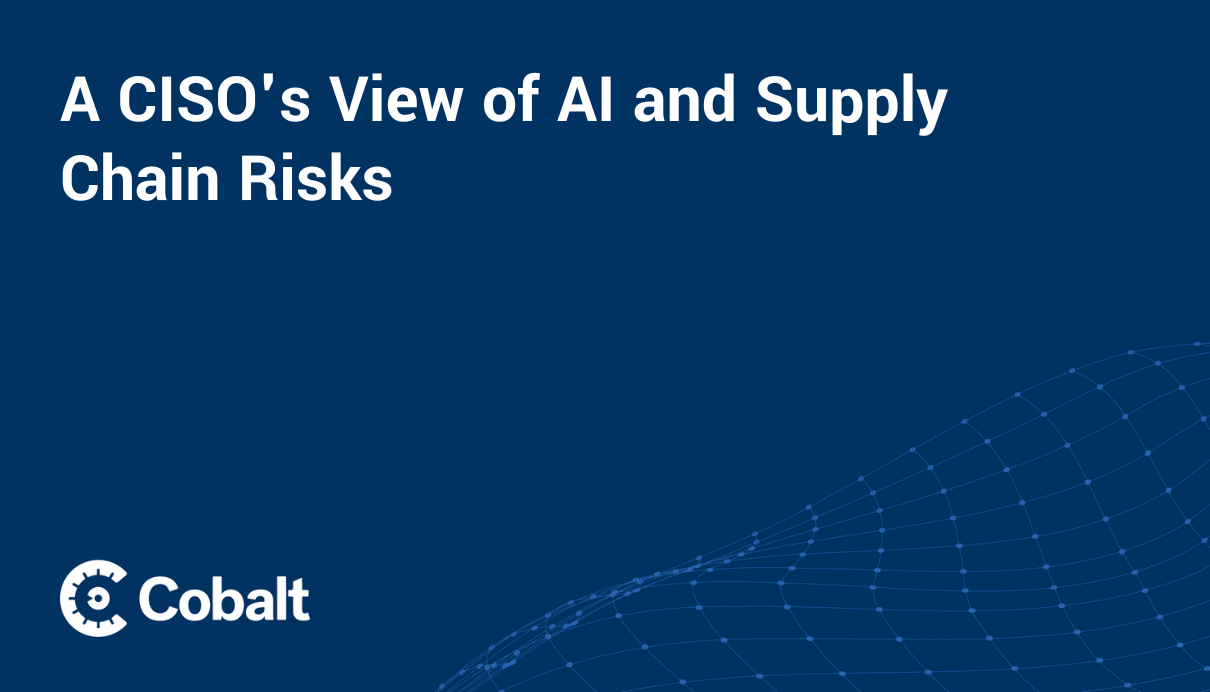This article was originally published on Cybersecurity Magazine.
As cyber criminals access increasingly sophisticated tools and techniques, organizations must develop comprehensive security frameworks and risk mitigation strategies. However, many modern defense strategies are still built on a reactive response to threats rather than a proactive approach that identifies potential risks before they become a problem.
Threat modeling has emerged as a way to proactively identify vulnerabilities and anticipate threats before they become significant issues. This approach allows organizations to go beyond simply responding to incidents as they happen and enable them to create more comprehensive security strategies that anticipate and prevent future attacks.
What is Threat Modeling?
Threat modeling is a methodical process that aims to pinpoint and evaluate possible risks and weaknesses in a system or application. This process allows organizations to comprehend the various dangers that could threaten their digital assets, enabling them to prioritize their security measures optimally. The fundamental objective of threat modeling is to establish a robust security plan that diminishes the chances of successful cyber attacks and lessens their impact.
Why is Threat Modeling Important?
Threat modeling offers numerous benefits to organizations, some of which include the following:
- Proactive Security: By identifying potential threats and vulnerabilities early in the development process, organizations can take proactive measures to address these issues and reduce the risk of security incidents.
- Efficient Resource Allocation: Threat modeling helps organizations prioritize their security efforts by focusing on the most critical vulnerabilities and threats. This ensures that limited resources are allocated effectively and efficiently.
- Improved Incident Response: Understanding the potential attack vectors and having a comprehensive threat model allows organizations to respond more effectively and quickly to security incidents.
- Compliance and Regulation: Many industries have specific security regulations and requirements that must be met. Threat modeling can help organizations demonstrate compliance with these standards by providing a clear understanding of the security measures in place.
Enhanced Communication: A well-structured threat model can serve as a communication tool between various stakeholders, such as developers, security teams, and management. This ensures everyone is on the same page regarding security priorities and efforts.
Threat Modeling vs. Pentesting
When securing an organization's digital assets, threat modeling and penetration testing are essential tools in a cybersecurity professional's arsenal. While both methods aim to identify and mitigate potential security risks, their approach, scope, and focus differ.
| Objective | Stage of Implementation | Primary Focus | Outcome | |
| Threat Modeling | To understand potential security threats, vulnerabilities, and mitigations early in the design phase. | Early stages of development. | Focus on identifying threat scenarios and understanding their implications. | Produces a list of potential threats and provides mitigation strategies. |
| Pentesting | To identify vulnerabilities in the system by simulating cyber attacks against it. | Performed as needed on an operating system or during late stages of system development. | Focus on proactively validating the identified risks through security testing. | Produces a list of successfully exploited vulnerabilities, along with recommendations for remediation. |
| Frequency | Tools Used | Approach | |
| Threat Modeling | Ongoing process throughout system implementations and development lifecycles. | Diagrams and structured methodologies (like STRIDE and PASTA) for threat identification. | Predictive approach based on threat scenarios. |
| Pentesting | Deployed at various stages of an SDLC (Software Development Life Cycle) either internally or with the help of a PTaaS (Penetration Testing as a Service) provider. | Automated and manual security testing tools like vulnerability scanners and penetration testing frameworks. | Reactive approach based on exploiting existing vulnerabilities. |
Types of Threat Modeling Frameworks
Threat modeling is a complex process that requires understanding the system architecture and potential threats. To simplify this process, there are various frameworks that organizations can use to identify and prioritize their security efforts. Some of the most popular threat modeling frameworks include:
STRIDE
STRIDE is a popular threat modeling methodology developed by Microsoft. The acronym stands for:
- Spoofing
- Tampering
- Repudiation
- Information disclosure
- Denial of service
- Elevation of privilege
STRIDE aims to categorize potential threats into these six categories, allowing organizations to identify vulnerabilities and develop appropriate countermeasures.
PASTA
PASTA (Process for Attack Simulation and Threat Analysis) is a risk-centric threat modeling methodology. It consists of seven stages:
- Define objectives
- Define the technical scope
- Application decomposition
- Threat analysis
- Vulnerability analysis
- Attack modeling
- Countermeasure Identification
PASTA focuses on understanding the attacker's perspective, simulating potential attack scenarios, and developing effective defenses.
OCTAVE
OCTAVE (Operationally Critical Threat, Asset, and Vulnerability Evaluation) is a risk-based threat modeling methodology developed by the Software Engineering Institute at Carnegie Mellon University. OCTAVE identifies critical assets, evaluates their vulnerabilities, and determines potential threats. The method consists of three phases:
- Organizational View: Identify critical assets and their importance
- Technological View: Analyze infrastructure and identify vulnerabilities
- Threat Profile: Develop a threat profile based on identified vulnerabilities
Steps to Incorporate Threat Modeling in Penetration Testing
While threat modeling and pentesting are different processes, they can be used together to create a comprehensive security framework. Below are the steps to incorporate threat modeling into a penetration testing program:
1. Identify Threats and Vulnerabilities
To ensure the safety and security of your system or network, it is crucial to first identify all possible threats and vulnerabilities. To achieve this, a thorough and detailed threat model must be established. This model serves as a guide to understanding potential risks and how they can impact your organization.
To begin, adopting a structured framework for threat modeling is essential. These frameworks provide a systematic approach to identifying threats and vulnerabilities by breaking down the system into its fundamental components and examining each for potential weaknesses.
2. Develop Security Controls
After identifying potential threats and vulnerabilities, organizations must take the necessary steps to mitigate them with comprehensive security controls. These controls include developing policies and procedures, implementing technical measures like firewalls and encryption, and providing employee training and awareness programs. It's vital for organizations to regularly review and update these controls to maintain their effectiveness against emerging threats and vulnerabilities.
3. Execute Thorough Penetration Testing
With the security controls in place, organizations should conduct penetration tests to validate their efficacy and uncover any additional risks that may have gone unnoticed. Penetration testing involves:
- Simulating cyber-attacks against the organization's systems and networks.
- Evaluating how well the implemented security controls respond to these simulated attacks.
- Identifying potential unknown weaknesses or vulnerabilities.
To ensure a comprehensive assessment, experienced professionals should carry out penetration tests using various testing methodologies, tools, and techniques.
4. Analyze Results and Remediate Identified Issues
Upon completion of the penetration testing process, organizations must carefully analyze the results to gain valuable insights into the effectiveness of their security controls and identify any areas requiring improvement. This may involve updating existing security policies or procedures, implementing additional technical measures, or reevaluating the overall security strategy. Organizations must treat the remediation of identified issues as a top priority, promptly addressing vulnerabilities to minimize the likelihood of successful cyber-attacks.
5. Continuously Monitor and Periodically Repeat
To effectively safeguard against cyber-attacks, organizations must remain vigilant with threat modeling and penetration testing. These activities require ongoing assessment and reassessment. By continuously monitoring systems and networks, adjusting security controls as needed, and periodically revisiting threat modeling processes, organizations can uphold a strong security posture amidst a constantly evolving threat landscape. By taking a proactive approach, organizations can greatly improve their cybersecurity and resilience against potential cyber threats.
Maximize the Effectiveness of Threat Modeling and Penetration Testing
Organizations must take a proactive approach to threat modeling and penetration testing to ensure an effective and comprehensive security framework. By leveraging the power of predictive risk-based methodologies, developing robust security controls, and conducting regular assessments, organizations can understand and mitigate risks before they become a reality.










